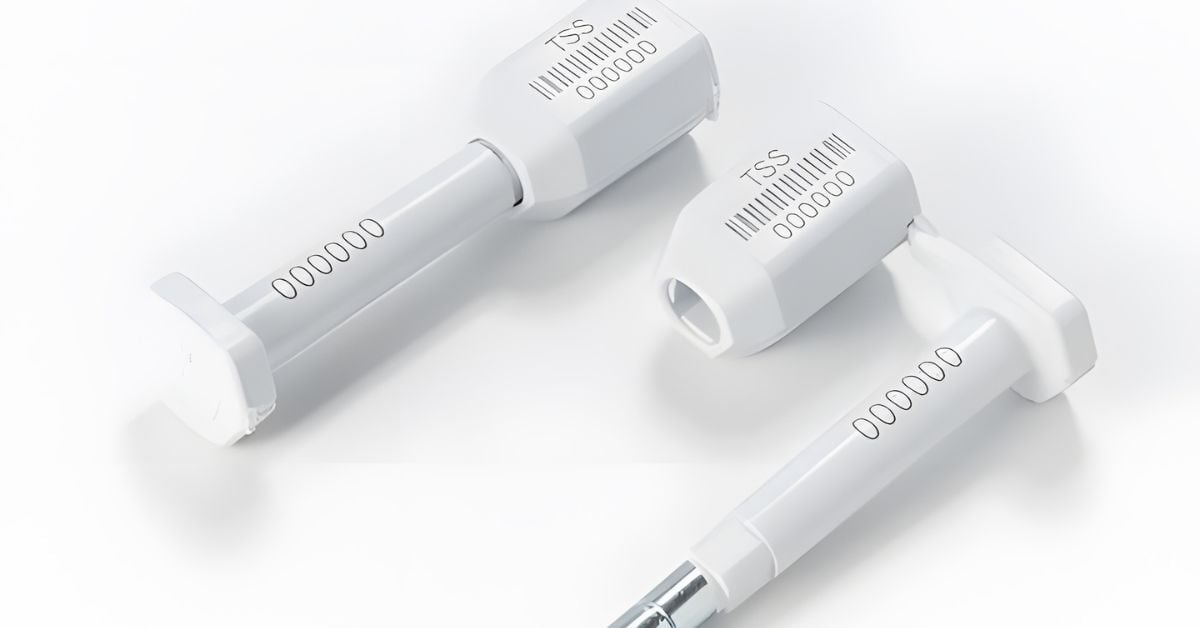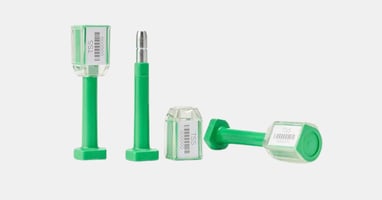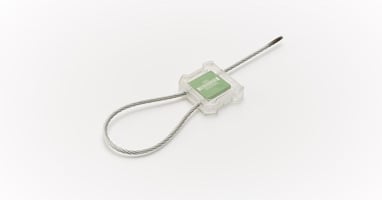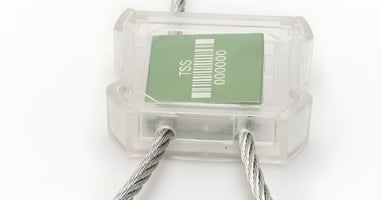Securing the movement of goods as they go through the supply chain is non-negotiable. From the...
The Manufacturing Process Behind High-Security Bolt Seals

High-security bolt seals protect valuable cargo during transport and storage. These tamper-evident devices secure shipping containers, trailers, and railcars, providing clear evidence of unauthorized access. Understanding how manufacturers create high-security bolt seals reveals why they offer superior protection compared to standard sealing options.
The production of high-security bolt seals involves precision engineering, quality materials, and thorough testing protocols. Each step in the manufacturing process contributes to the seals’ ability to withstand tampering attempts while maintaining ease of use for authorized personnel.
Material Selection Sets the Foundation
Manufacturers begin by choosing materials that balance strength, durability, and cost-effectiveness. High-grade carbon steel forms the base of most bolt security seals, as it offers exceptional tensile strength that resists cutting and breaking. The steel must meet specific hardness ratings, ranging from 45 to 55 on the Rockwell C scale.
The locking mechanism requires additional materials, and manufacturers typically use hardened steel pins or rods that interlock with the bolt body. These components undergo heat treatment to increase hardness and prevent drilling or sawing attempts. Some manufacturers also incorporate stainless steel elements to improve corrosion resistance in marine environments or extreme weather conditions.
Plastic components, typically made from ABS or polycarbonate, form the seals’ outer housing. These materials protect the metal components from environmental damage while displaying identification numbers and company branding. The plastic must withstand temperature extremes from -40 to 140 degrees Fahrenheit without cracking or becoming brittle.
Precision Machining Creates Critical Components
The manufacturing process transforms raw materials into precise components through computer-controlled machining. CNC lathes shape the steel rods into bolt bodies with exact dimensions. Tolerances must remain within 0.001 inches to ensure proper function and prevent premature failure.
Threading operations cut grooves into the bolt shaft so it can accept the locking mechanism. These threads require consistent depth and spacing, as inconsistent threading can create weak points where tampering attempts might succeed.
Manufacturers produce the locking pins through similar precision processes. These pins feature specific groove patterns or notches that engage with the bolt threads, and the pin design determines the seal’s overall security level and tamper resistance.

Heat Treatment Strengthens Metal Components
After machining, metal components undergo heat treatment to achieve optimal hardness. Manufacturers heat the steel to approximately 1,550 degrees Fahrenheit in controlled furnaces. This process, called austenitizing, changes the steel’s molecular structure.
Rapid cooling, or quenching, follows the heating phase, with manufacturers immersing the hot components in oil or water to lock in the desired hardness. The quenching medium and cooling rate affect the final properties of the steel, making it vital for manufacturers to select the appropriate options.
Tempering provides the final adjustment to the metal’s characteristics. This process reheats the components to lower temperatures, typically between 300 and 700 degrees Fahrenheit. Tempering reduces brittleness while maintaining hardness, creating components that resist both breaking and cutting.
Assembly Brings Components Together
The assembly phase combines all manufactured components into functional seals. Workers or automated systems insert the locking pins into bolt bodies, ensuring proper alignment and smooth operation. Quality control checks verify that each seal locks securely and requires appropriate force to engage.
Manufacturers laser-etch or stamp unique identification numbers onto each seal. These sequential numbers enable tracking and verification throughout the supply chain, as the numbering system allows companies to match seals with specific shipments and detect potential security breaches.
Plastic housings snap onto the metal components during final assembly. These housings display the identification numbers prominently and provide space for company logos or barcodes. Some manufacturers opt to add color-coded elements to distinguish between different seal types or security levels.
Quality Testing Ensures Reliability
Comprehensive testing protocols verify that the finished seals meet security standards and performance requirements. Manufacturers conduct several types of tests, including:
- Tensile strength testing: Machines apply increasing force until the seal breaks, measuring the maximum load the seal can withstand.
- Tamper resistance evaluation: Technicians attempt to compromise seals using common tools like bolt cutters, saws, and drills.
- Environmental testing: Seals undergo exposure to extreme temperatures, humidity, and corrosive substances.
- Functional testing: Quality control staff verify that seals lock properly and display identification numbers clearly.
Testing standards follow guidelines established by organizations like ISO (International Organization for Standardization) and C-TPAT (Customs-Trade Partnership Against Terrorism). Security seals must demonstrate resistance to tampering attempts for a minimum time period and show visible evidence if someone attempts unauthorized removal.
Compliance Certification Validates Security Standards
Manufacturers seek certification from recognized security organizations to validate their products meet industry standards. ISO 17712 provides the primary standard for high-security seals used in international shipping. This standard defines three security levels: indicative, security, and high-security.
High-security bolt seals must pass rigorous testing to earn ISO 17712 certification. The certification process includes independent laboratory testing of seal strength and tamper resistance, documentation of manufacturing processes and quality control procedures, regular production facility audits, and ongoing production sample testing to verify consistent quality.
Certified seals display markings that identify the manufacturer, certification level, and unique seal number. These markings allow customs officials and security personnel to verify seal authenticity and detect counterfeit products.

Continuous Improvement Advances Security Technology
Leading manufacturers invest in research and development to enhance seal security and functionality. Recent innovations include RFID (radio-frequency identification) technology embedded within seals, which allows for electronic tracking throughout the supply chain. These smart seals transmit data about seal status, location, and tampering attempts.
Some manufacturers develop specialized coatings that change color or display warning messages if someone attempts to remove or compromise the seal. Others focus on improving materials to reduce weight while maintaining security performance, helping companies reduce shipping costs without sacrificing protection.
Manufacturing facilities implement lean production methods to improve efficiency and reduce seal defects. And automation increasingly handles repetitive tasks, while skilled technicians focus on quality control and complex seal assembly operations.
Protecting Global Supply Chains
Companies shipping high-value goods, hazardous materials, or sensitive products depend on high-security bolt seals to maintain supply chain integrity. The investment manufacturers make in materials, processes, and testing keeps these security devices performing reliably across diverse environments and applications.
Understanding the manufacturing process behind high-security bolt seals helps security professionals and logistics managers appreciate the engineering that goes into these essential tools. This knowledge supports better decision-making when selecting seals and implementing comprehensive cargo security programs.




